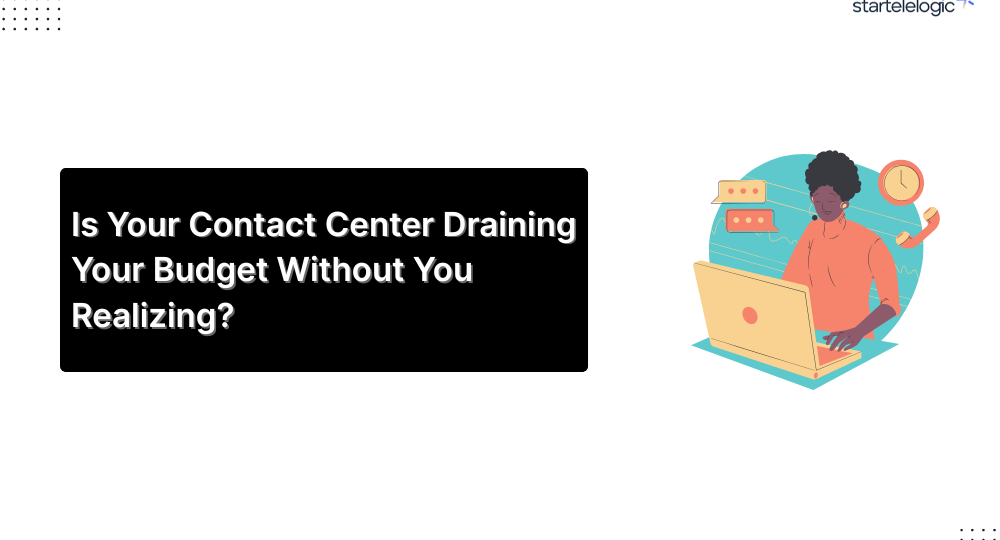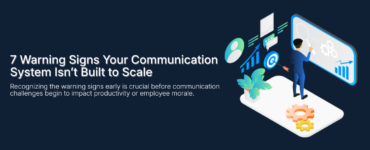Running a contact center isn’t cheap — and contact center costs can add up faster than you think. But what if you’re spending more than you need to — and don’t even realize it? Many businesses create a budget for their contact center, then assume everything is running smoothly. But the truth is, small problems often go unnoticed. Over time, these hidden issues slowly drain your budget and reduce your overall profits.
Common examples include overstaffing during slow periods, using outdated or inefficient software, or not tracking agent productivity properly. Even small delays in handling customer queries can lead to higher operational costs. And if you’re outsourcing support without regular audits, you might be paying for more than you’re getting.
It’s easy to think cost-cutting means reducing service quality — but that’s not the case. With the right tools and strategy, you can lower your contact center costs without affecting the customer experience. In fact, many cost-saving steps can actually improve performance, speed, and customer satisfaction.
In this article, we’ll walk you through the most common ways contact centers lose money — often without noticing — and show you practical ways to fix those leaks. From smarter scheduling to better use of automation, small changes can make a big difference to your bottom line.
1. You’re Paying for More Agents Than You Actually Need
You might be surprised how often this happens — contact centers lose money without even realizing it. One of the biggest culprits? Poor forecasting and outdated scheduling tools. Even if each agent is idle for just a few minutes every hour, multiply that across your entire team and a full workday, and you’re looking at hours of wasted productivity — and budget.
What’s a quick fix? Start using real-time data to adjust shift patterns on the fly. When you align agent schedules with actual customer demand, you reduce idle time and lower overall staffing costs — without sacrificing service quality.
2. Hidden Costs Are Hiding in Your Daily Operations
Some costs don’t show up clearly on a budget sheet, but they’re there, quietly eating away at your bottom line.
Take long call handling times, for example. These often happen because agents aren’t properly trained or don’t have access to a reliable knowledge base. Then there are multiple transfers, customers getting bounced from one agent to another before their issue is resolved. And don’t forget unnecessary callbacks or repeated tickets for the same issue.
These seemingly small inefficiencies add up. They lead to longer average handle times, lower productivity per agent, and ultimately, much higher contact center costs than you might realize.
3. Outdated Tools Are Slowing Everyone Down
If your agents need to juggle five different tabs just to solve a single customer issue, it’s more than just a hassle — it’s quietly draining your budget. Every extra minute spent navigating systems adds up in operational costs.
That’s why modern solutions like cloud-based platforms or AI-powered tools aren’t just “nice to have” anymore — they’re becoming essential. These technologies streamline workflows, reduce handle time, and help uncover hidden costs that traditional setups often overlook.
4. You’re Losing Money Every Time an Agent Quits
Agent turnover is one of the biggest hidden drains on your contact center budget. Every time a trained agent walks out the door, you’re not just losing a team member — you’re losing all the time, money, and effort that went into hiring and training them. And then you have to start the entire process from scratch.
So how do you stop the cycle? Start by investing in the people you already have. Providing better support, offering flexible scheduling, and giving regular, constructive feedback can go a long way in keeping agents engaged and motivated. The result? Higher retention, lower hiring costs, and a stronger, more experienced team.
5. Metrics Might Be Lying to You
It’s easy to think your contact center is running smoothly when the standard KPIs — like call volume or average handle time — look good. But those metrics don’t always reveal where money might be quietly slipping away.
To get a clearer picture, dig deeper into metrics that often tell a more complete story:
- First Call Resolution (FCR): Are your agents resolving customer issues on the first try, or are repeat calls driving up costs?
- Agent Occupancy Rate: Are your agents being overworked or underutilized? Both can hurt efficiency — and your budget.
- Customer Effort Score (CES): How hard is it for customers to get help? A high-effort experience often leads to longer calls, more follow-ups, and lower satisfaction.
Looking closely at these performance indicators can help you uncover hidden inefficiencies, and show you where to start cutting unnecessary contact center expenses.
Final Thought
You don’t always need a complete overhaul to get your contact center costs under control. In many cases, it’s the small, overlooked inefficiencies that quietly drain your budget — like outdated workflows, underutilized software, or scheduling mismatches that lead to overstaffing during slow periods and understaffing when it’s busy.
If your contact center seems to be running smoothly on the surface, but your numbers don’t reflect that, it’s time to take a closer look. Often, hidden costs are buried in day-to-day operations, and once identified, even minor adjustments can lead to significant savings. The key is knowing where to look — and acting before small leaks become big losses.
Frequently Asked Questions About Contact Center Costs
1. What are the biggest factors that affect contact center costs?
The main factors include staffing, technology, call volume, average handle time, and agent turnover. But often, hidden inefficiencies like poor scheduling or outdated tools silently increase overall contact center costs.
2. How can I reduce contact center costs without lowering service quality?
Start by improving agent training, optimizing schedules, and using smarter technology. These changes help you handle more calls efficiently, which naturally brings contact center costs down without affecting customer experience.
3. Are hidden costs common in call center operations?
Yes, very common. Things like high agent attrition, repeated calls, poor first-call resolution, and idle agent time all contribute to hidden contact center costs that don’t always show up clearly in reports.
4. Is investing in better technology worth it for controlling contact center costs?
Absolutely. Modern tools reduce handling time, streamline agent workflows, and improve customer satisfaction. In most cases, the upfront investment pays off by lowering long-term contact center costs.
5. How does agent turnover impact my contact center budget?
High turnover increases hiring and training expenses and reduces overall efficiency. Managing attrition is one of the smartest ways to control contact center costs over time.
6. What’s a simple first step to evaluate if my contact center is costing too much?
Start by auditing your current performance metrics — especially things like repeat calls, average handling time, and staffing levels. Even a basic review often reveals where contact center costs are leaking unnecessarily.




